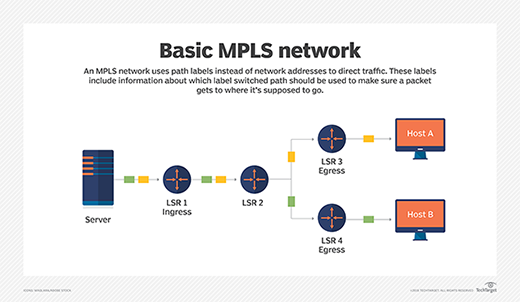
Gajus - Fotolia
Understand UC quality issues and which QoS tools can solve them
Improving UC quality means knowing what causes problems and which QoS tools are available. This mini-glossary will help you navigate the terms related to QoS.
Unified communications platform providers need to ensure a basic level of reliability for their offerings. Achieving quality of service, or QoS, is often part of a standard service-level agreement between providers and purchasing organizations. Most vendors support communications quality through QoS tools that monitor and manage data traffic.
QoS tools help maintain a high-quality experience for communications, such as voice over IP (VoIP) and video calls. Call degradation can lead to a diminished communications experience that affects workflow.
Ensuring the highest-quality communications for a business means knowing and understanding what QoS tools are available and what issues they can resolve. This mini-glossary covers the problems that can affect communications quality and the tools to maintain that quality.
Defining UC quality issues
Packet loss. Packet loss occurs when some of the packets sent in a session do not meet their designated endpoint. In most cases, packet loss is a result of weak signal strength from the designated endpoint, hardware failure, software corruption or a combination of these factors. Packet loss affects the quality of calls by causing problems, such as errors, jitter and, in the case of voice calls, missing pieces of audio.
Jitter. Jitter is a problem for most real-time communications and presents differently depending on the communication type. For audio communications, jitter is the result of excessive unwanted sound on a call, such as clicking. Jitter for video communications can appear as image distortion, as well as flickering in the image. Electromagnetic interference is one of the most common causes of jitter, as the interference can cause data packets to arrive late to their destination.
Latency. Latency is a delay from the time data is sent to the time it reaches its destination. Types of latency include network latency, WAN latency, internet latency and interrupt latency. The most prevalent form for UC is audio latency, which is a delay between the time a sound is created and when it is actually heard.
Latency is determined by the speed of sound, which changes depending on the medium the sound waves traverse. The length of delay in audio depends on the hardware and software being used. To reduce latency, organizations can optimize their network and software configurations and use techniques like parallelism, which sends data packets over several pathways at the same time.

QoS tools to ensure communications quality
Jitter buffer. Like the name suggests, a jitter buffer is intended to prevent jitter from interfering with VoIP calls. To prevent a variation in arrival times for data packets, jitter buffers collect and store voice packets before passing them to the voice processor.
Intentionally delaying arriving packets allows them to be delivered at even intervals, with minimal distortion for end users. Hardware-based jitter buffers are called static jitter buffers, while software-based buffers are called dynamic jitter buffers.
Traffic shaping. Also known as packet shaping, traffic shaping involves monitoring and regulating network data to ensure performance. Traffic shaping essentially prioritizes traffic designated as more important by delaying packets deemed less important. This can be done as packets flow in and out of a network.
Bandwidth. The amount of data that can transmit between endpoints over a computer network is determined by the capacity of a network communications link, otherwise known as the bandwidth. Bandwidth is not a measure of network speed. Most modern network links operate on either millions or billions of bits per second.
The amount of bandwidth determines how much data can be sent and received at a given time. Too little bandwidth can slow a network if too much data is sent through at once, much like a traffic jam.
MOS. Mean opinion score is the numerical value that grades the quality of speech when it is received at its destination. The number gives a quantitative value for a system's performance. MOS is determined by having a number of listeners rate the quality of test sentences read by both male and female speakers on a communication circuit. Sentences are rated from one to five, with one being bad quality and five being excellent quality. The mean of these ratings is the MOS for the circuit.
MPLS. Multiprotocol Label Switching is a routing technique used to shape traffic across an enterprise WAN. MPLS is protocol-agnostic and allows data packets to be forwarded at the switching level, rather than the routing level. It also uses fewer steps to determine a packet's destination than traditional IP routing. Packets are labeled when they enter the service provider's network, and all subsequent label switching routers forward the packet based on that label.
SD-WAN. Software-defined WAN distributes traffic across a WAN by determining the most effective ways for traffic to reach its destination. SD-WAN sits on top of a network, creating an overlay that takes into account the various connections available.
SD-WAN is managed by a centralized controller, allowing IT to remotely program devices. SD-WAN allows for traffic provisioning, so high-priority traffic can be prioritized over low-priority traffic.







